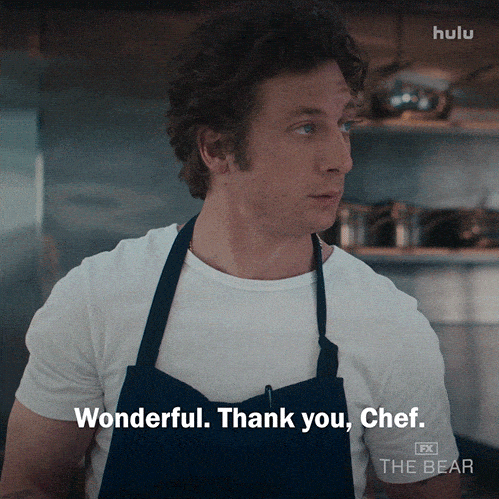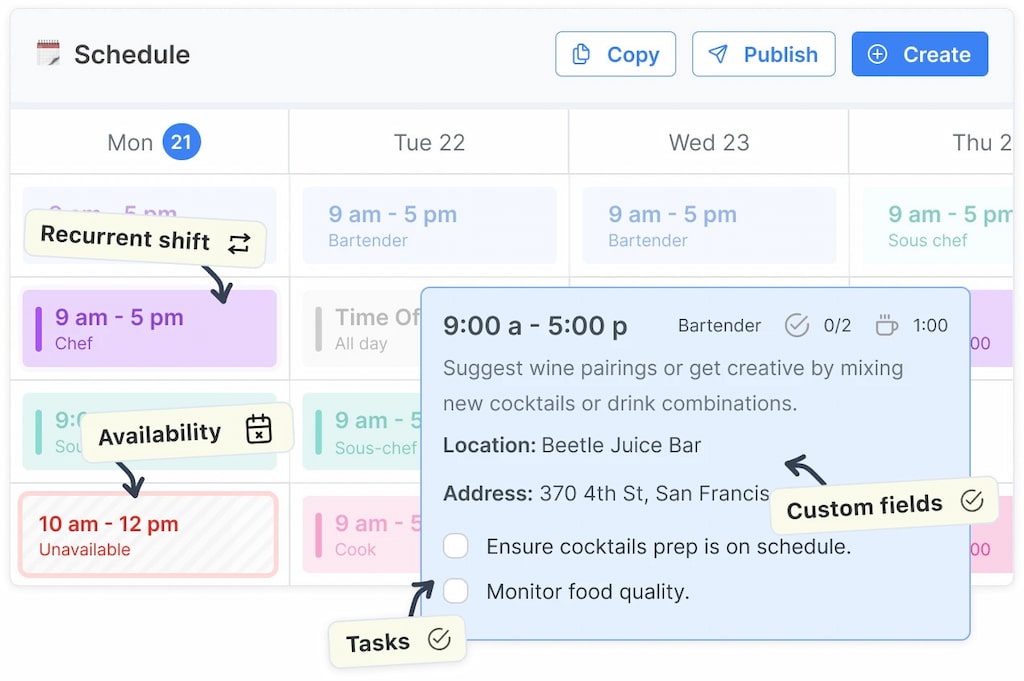Your kitchen is swamped, a server just called out sick, and the schedule on your clipboard no longer matches reality. You feel tension mounting, guests waiting, and the pressure to deliver without dropping the ball. As a restaurant manager, your role is often reactive—but it doesn’t have to stay that way. In this article, you’ll get forward-looking, actionable restaurant management tips that work in 2025. From staffing and scheduling to tech and culture, you’ll see how integrating restaurant management software like Shifts by Everhour can keep your operation lean, aligned, and resilient.
🍽️ What Restaurant Management Actually Means in 2025
Restaurant management isn’t just overseeing service—it’s orchestrating people, processes, and unpredictability under tight margins. Modern managers focus on:
- 📊 Data-driven decisions: Lead with insights, not guesswork.
- 🤖 Automation: Reduce friction in scheduling, ordering, and reporting.
- 👥 Talent retention: Keep employees engaged in a competitive labor market.
- 🌟 Guest experience: Ensure consistency even when external factors change.
Today’s effective managers combine analytics, emotional intelligence, adaptability, and tech fluency to succeed.

👀 Key Areas of Focus for Restaurant Success
🍽️ 1. Staffing & scheduling: the human backbone
Labor is often your largest cost and the most elastic challenge. Good restaurant scheduling isn’t just putting names on shifts—it’s protecting staff, preventing burnout, and matching supply to demand.
- 📊 Demand-based planning: Build schedules backward from forecasted covers instead of repeating last week’s template.
- 🔄 Flexibility & swaps: Offer shift swap options so your team can trade responsibly. Tools like Shifts by Everhour automate these workflows while keeping coverage rules intact.
- 🗓️ Advance publishing: Post schedules 5–7 days early so staff can plan ahead and stay motivated.
📈 2. Monitor performance with real data
Your gut is useful—but data is decisive.
- 💰 Track sales-to-labor ratios, average check, covers per hour, and labor variance.
- ⚙️ Use real-time dashboards and alerts to act fast when issues appear.
- 🕒 Compare scheduled vs actual hours to refine labor estimates and staffing needs.
📦 3. Inventory & cost control
Cost control begins long before service starts.
- 📊 Keep a “one-sheet” budget with sales, COGS, labor, and operating expenses.
- 📋 Run mini-inventory counts on high-value items and verify receipts carefully.
- 🚚 Maintain backup suppliers for critical ingredients.
- 🤖 Lean on automation for low-stock alerts, vendor ordering, and P&L snapshots.
💬 4. Culture, communication & leadership
Even the best systems fail without engaged people.
- 👀 Be visible: Walk the floor, support staff, and observe bottlenecks in real time.
- 👏 Praise often: Celebrate wins to reinforce morale and teamwork.
- 🗣️ Daily huddles: Keep 5-minute team syncs to align on priorities and energy.
- 💛 Lead with empathy: Understand personal challenges and listen actively.
🌟 5. Guest experience & flow optimization
Great service should feel effortless—even when it’s busy.
- 🏃 Aim for about 80% capacity to preserve flow and guest comfort.
- 🪑 Adjust layouts to guest patterns rather than rigid seat assignments.
- 🔥 Sync front and back of house to avoid service bottlenecks and stress.
💡 6. Technology & automation
Smart restaurants use tech to support—not replace—people.
- 🕓 Scheduling + time tracking: Tools like Shifts by Everhour merge rostering and real-time tracking for full visibility.

- 📊 POS integration: Use sales data to guide labor forecasting.
- 📦 Inventory alerts: Prevent spoilage and reduce shrink.
- 📱 Guest-facing automation: Online bookings, digital menus, and contactless payments lighten workloads.
💡 Scheduling & Management Tools for Restaurants
| Tool | Key Features | Pricing/Plan | Ideal For |
| Shifts by Everhour | Drag-and-drop scheduling; open shifts & swaps; built-in time tracking; mobile alerts; scheduled vs actual reporting | Free & paid plans | Restaurants that want staffing and time visibility in one app |
| 7shifts | Labor optimization; schedule templates; swap control; integration with POS | Paid plans | Full-service and fast-casual operations focused on labor efficiency |
| Toast POS ( workforce module ) | Scheduling; labor compliance; sales analytics; staff mobile app | Paid plans | Restaurants already using Toast POS wanting scheduling in their ecosystem |
| HotSchedules | Forecasting; shift trade; labor budgeting; mobile management | Paid plans | Multi-location chains needing advanced scheduling control |
| Schedules4Restaurant | Staff shift automation; labor cost calculations; custom prints | Licensing or subscription | Traditional operations wanting an all-in-one scheduler |
| Restaurant365 (staff module) | Data integration; scheduling; performance insights; dashboard views | Enterprise pricing | Managers wanting schedule + financial integration |
| Upserve (by Lightspeed) | POS-driven scheduling; dashboard labor insights; mobile staff tools | Paid plans | Independent restaurants seeking unified POS + labor |
| 7Rooms Workforce | Shift planning; team communication; staff back-office tools | Paid subscription | Hospitality brands blending front-of-house and reservation ops |
Tool highlights & best fits
- Shifts by Everhour: best for teams that want to avoid juggling separate tools for schedule and time.
- 7shifts: popular industry choice, especially with strong POS integrations.
- Toast POS (workforce module): seamless if you already use Toast.
- HotSchedules: built for high-volume chains and large teams.
- Restaurant365: fits operators needing schedule data tied into accounting and reporting.
❓ FAQ: Restaurant Management Tips
How do I reduce labor cost without hurting service?
Schedule to demand peaks, use real-time tracking, buffer smartly, and cross-train staff.
How often should staff schedules change?
Update weekly at minimum; freeze major changes ~48 hours before any shift unless emergency.
Should I automate too much?
Automate low-value tasks—notifications, conflict detection—but keep human oversight for judgment.
How do I retain good staff?
Respect their time, pay fairly, give growth paths, praise wins, and reduce week-to-week uncertainty.
Can small restaurants use tools like Shifts by Everhour?
Yes — they often offer free or low-cost plans suited for small teams needing predictability and accountability.
🧠 Final Thoughts: Restaurant Management Tips
Restaurant management in 2025 is more than survival. It’s about dialing in systems, empowering your team, and leaning on technology to amplify—not replace—your human touch.
As costs rise and expectations shift, the difference between a stressed manager and a confident one often comes down to your stack—how your schedule, your labor, and your feedback loops work together. Shifts by Everhour helps align staffing plans and actual performance so you see where your people stretch and where you need to adjust template logic.
If running a restaurant is part art and part science, your job is to build the framework where art thrives. Start with one tip, automate one process, and inch toward a restaurant that runs clearly, reliably, and humanely.
Shifts by Everhour is also one of the best free apps for cleaning business, police and fire departments, and many other industries!

